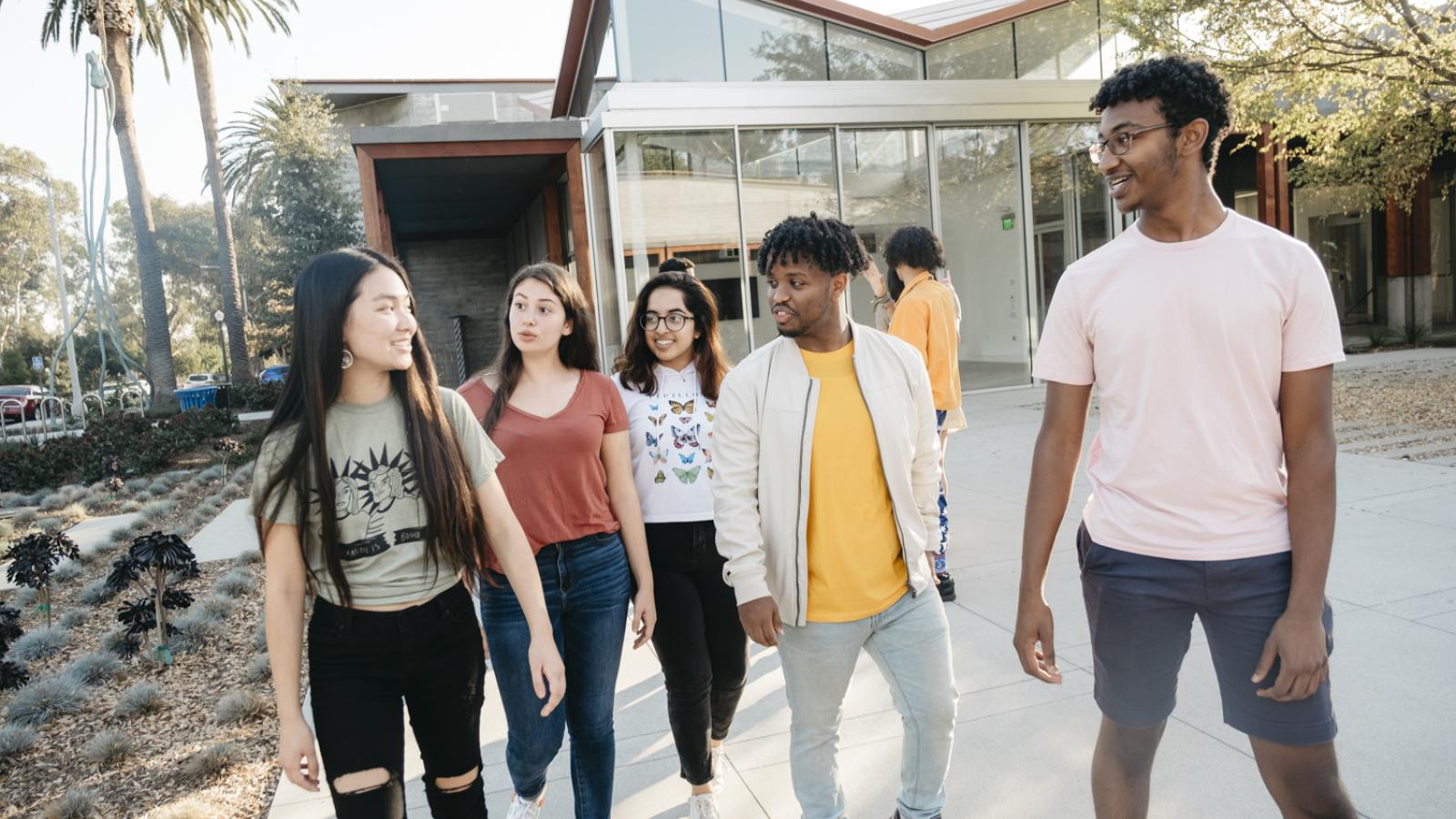As the world begins to recover from the COVID-19 pandemic, Pomona College is moving full steam ahead for full on-campus operations this fall, and is preparing to welcome the Class of 2025. Student applicants across the U.S. and the world will be able to see their decisions via secure online access starting at 5 p.m. PDT on Thursday, March 25, 2021.
“In a difficult year, when so many lives and plans were upended, the Admissions Committee was inspired by the adaptability, creativity, dedication and compassion evident in the experiences of those who applied to the new class,” said Seth Allen, vice president for strategy and dean of admissions and financial aid. “I know the entire campus joins me in looking forward to welcoming a very special Class of 2025 to campus in August.”
About the Class
Pomona will offer admission to 745 students who come from 50 U.S. states plus the District of Columbia, Guam, the Northern Mariana Islands, Puerto Rico, and the U.S. Virgin Islands, and from 58 other countries.
Eighty-three students were admitted in a previous year and deferred enrollment until this year. A Pomona College-Cambridge University Downing Scholar will also join the class.The admitted students are 57% female and 43% percent male. Three of them are veterans of the U.S. Armed Forces.The group is exceptionally diverse, consisting of 54.8% domestic students of color—17.2% identified as Latina/o, 16% as Asian American, 11.8% as Black, 8.9% as multiracial and 0.9% as Native American—while 26.3% are white, 15.8% are international and 3.1% declined to state. Of the Native American students, two are American Indian/Alaska Native and five are Native Hawaiian. Also, 25 students note Native heritage as part of a multiracial identity. First-generation college students—meaning neither parent has a four-year college degree—make up 18.5% of those admitted to the Class of 2025.
In addition, the College admitted 23 transfer students. Three transfer students were admitted in a previous year and deferred enrollment until this year. Fifteen of the admitted transfer students are transferring from a community college, and 13 are first-generation students. Two new transfer students are Kaplan Leadership Scholars. Seven military veterans were admitted this year, two of whom are currently serving. Five of the admitted military veterans are affiliated with Service to School (S2S), and the admitted veterans represent four branches of the U.S. Armed Forces: the Air Force, Army, Marine Corps and Navy.
Academics
Students admitted to the Class of 2025 are academically exceptional. Of those who attend high schools that rank students, 91% are in the top 10% of their class. Students applied under a test-optional policy (ACT or SAT) this year, and 57% of newly admitted students submitted a standardized test score.
The group identified a broad range of academic interests, with 21.7% of admitted students indicating a first choice major in the humanities, 25.8% in interdisciplinary fields, 27.8% in the natural sciences, 21.3% in the social sciences and 3.4% undecided about their field of study. In identifying their future academic focus, 60.9% chose their two top major choices from different academic disciplines.
Eighteen percent of admitted students submitted an optional arts supplement in the fields of dance, music, theatre or visual arts.
Where They Come From
The top U.S. states where admitted students come from are California (167), New York (46), Illinois (38), Texas (34), Washington (34), Florida (23), Colorado (18), Massachusetts (16) and Maryland (15). Admitted international students hail from 58 countries, a significant increase from last year, when international students were admitted from 45 countries. The largest representation this year includes admitted international students from China (21); the United Kingdom (9); India (7); Canada, Hong Kong, Japan and Mexico (6 each); Singapore (5); Kenya, South Korea and Turkey (4 each). In all, admitted students come from 635 schools worldwide.
Recruiting the Class
Reaching out to a deep and talented pool of prospective applicants, Pomona admissions officers recruited virtually this year, completing nearly 300 virtual events, including virtual school visits, college fairs, group presentations and virtual programs with community-based organizations and student groups. Through this outreach, they met online with more than 33,600 students, parents, community-based-organization advisors and high school college counselors around the world. Alumni played a key role in recruiting this class as well.
An additional 3,218 students and visitors attended virtual campus tours and information sessions during this unusual year, and 2,900 students registered for monthly virtual programs.
“Recruiting this class required more creativity, dedication and effort than ever before,” said Adam Sapp, assistant vice president and director of admissions. “I am so proud of every single member of Pomona’s admissions and financial aid offices — their focus, collaborative spirit and ability to keep students at the center of our work all year long was truly inspiring.”
Pomona’s commitment to increasing access bore fruit, with three admitted students from surrounding Los Angeles communities having participated in the Pomona Academy for Youth Success (PAYS), an intensive, three-year college preparation program run by the College’s Draper Center for Community Partnerships. In addition, 17 students in the Class of 2025 were matched through Pomona’s partnership with QuestBridge and 20 students were admitted through the Posse Foundation. Also, 92 admitted students reported working with a community-based organization (CBO), including Leadership Enterprise for a Diverse America (LEDA), Chicago Scholars, College Horizons, A Better Chance, Thrive Scholars and Matriculate.
In addition, Pomona has also built relationships with international organizations that help colleges connect with applicants from under-resourced schools. They include Bridge2Rwanda, the Grew Bancroft Foundation and The Sutton Trust as well as numerous local and regional programs.
